
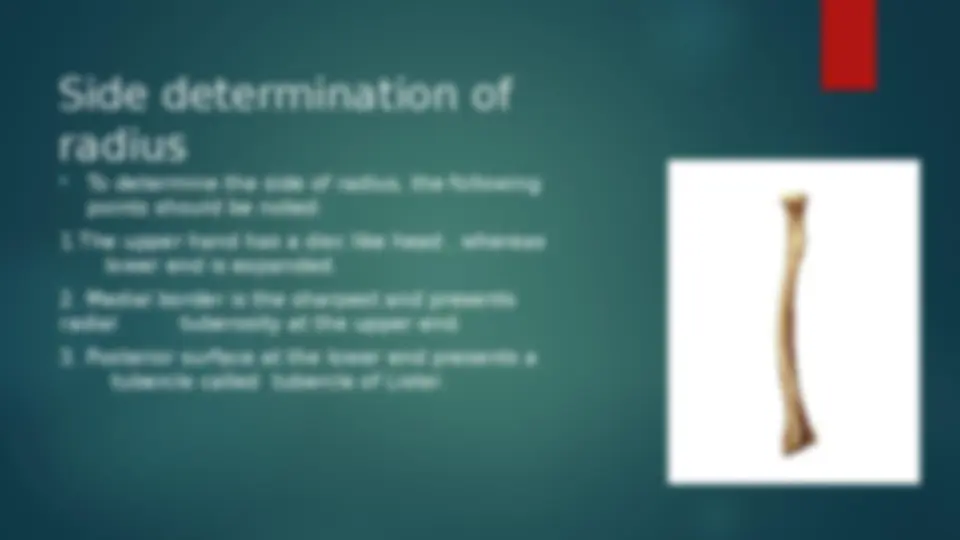
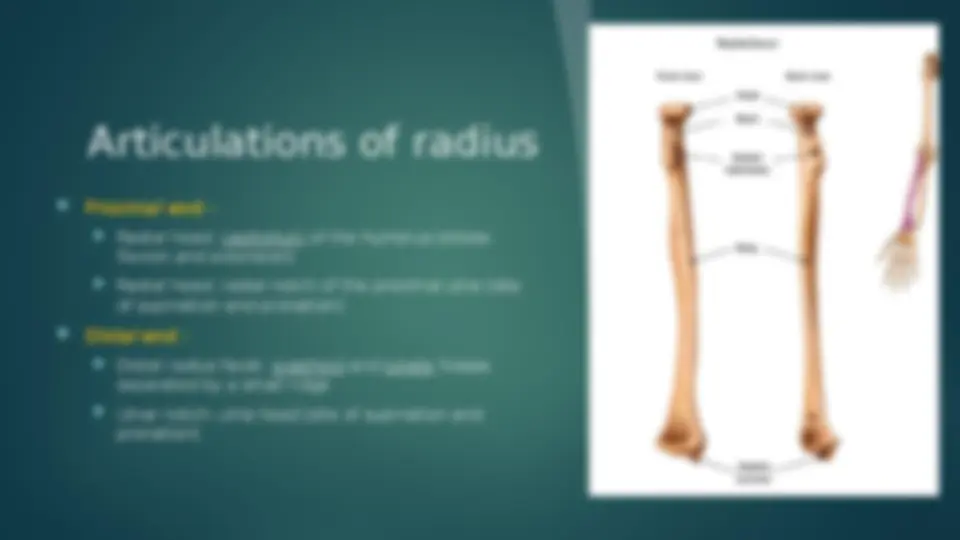
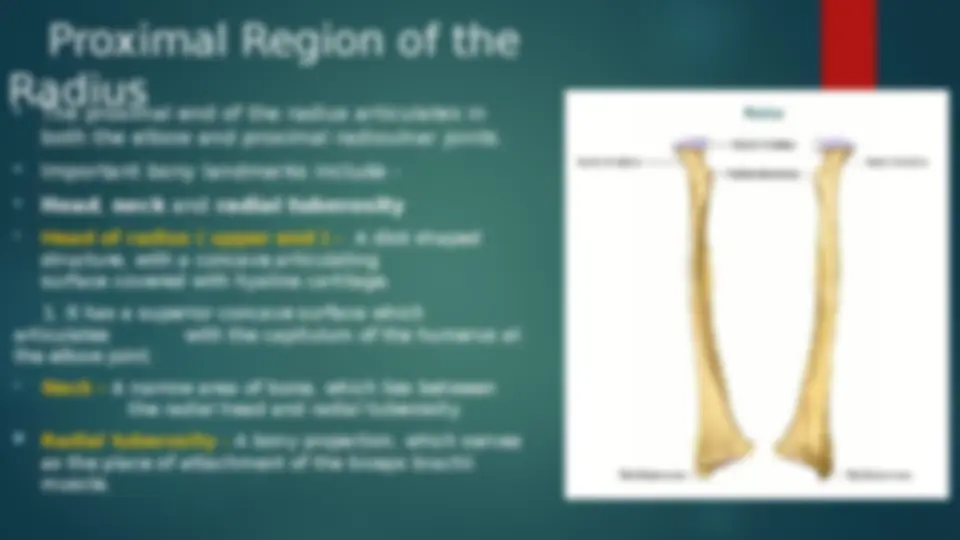
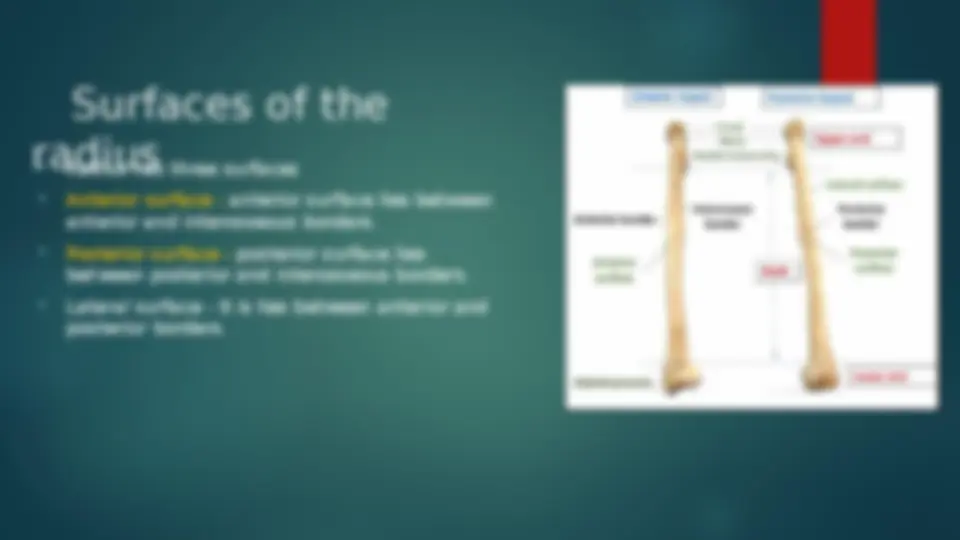
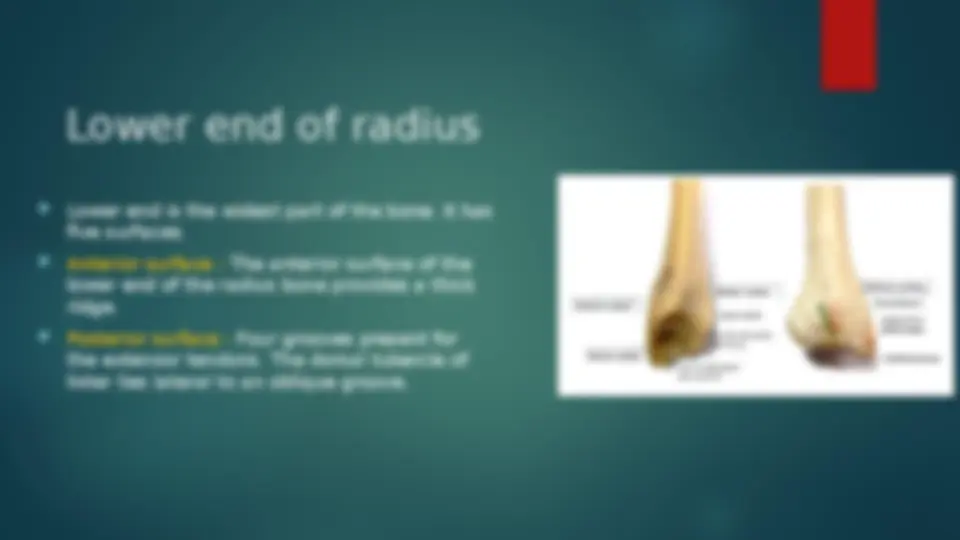
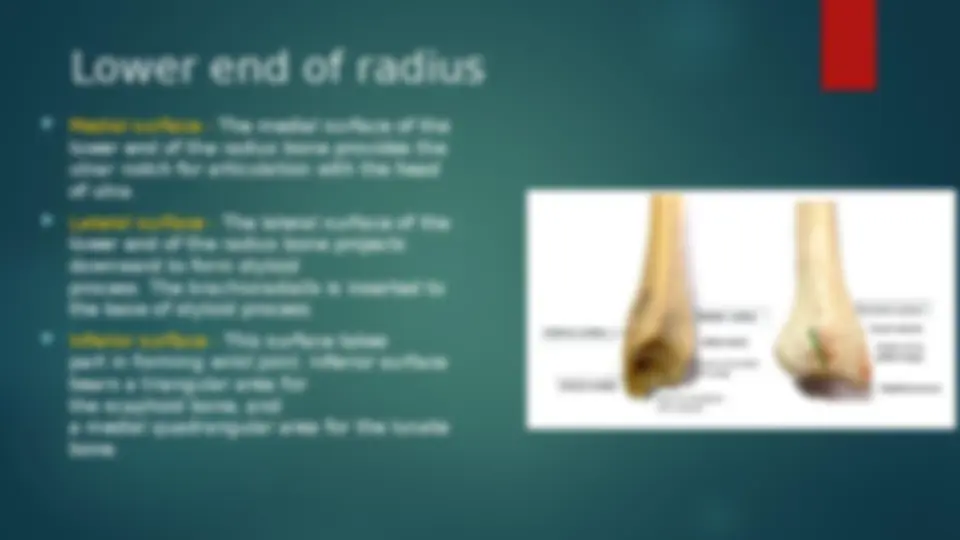
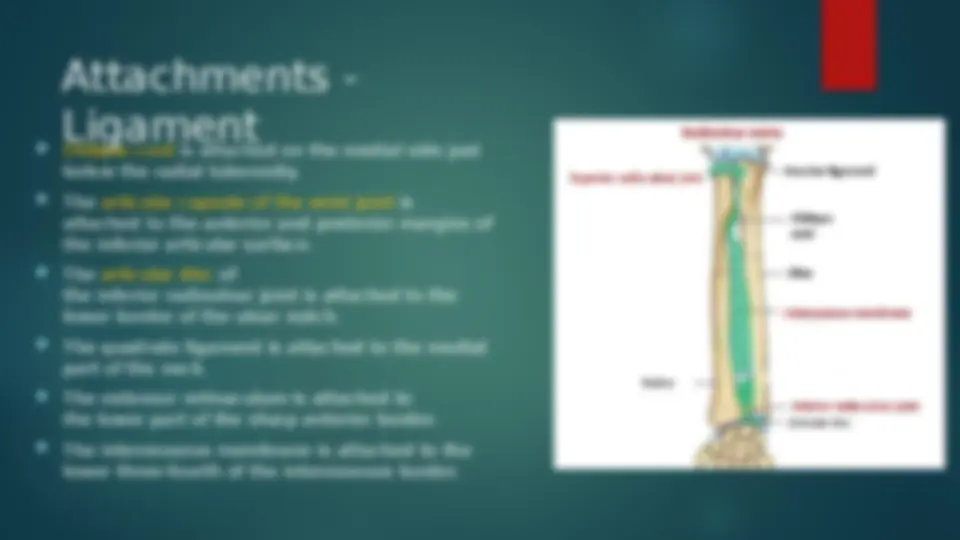
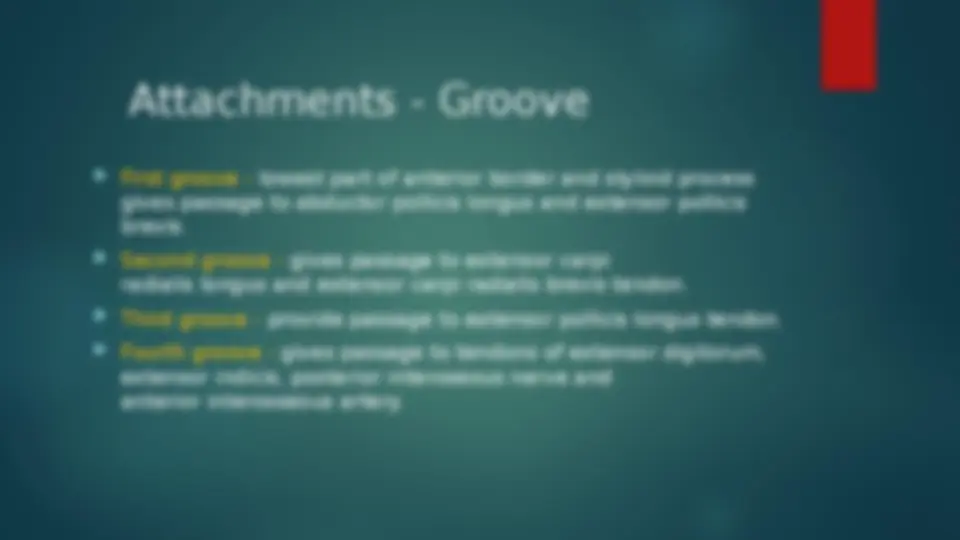
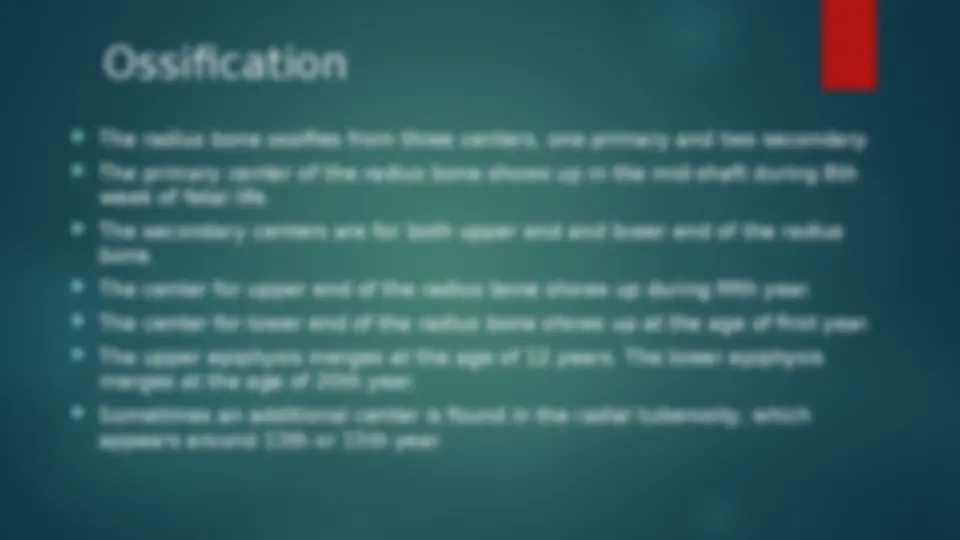


Study with the several resources on Docsity

Earn points by helping other students or get them with a premium plan


Prepare for your exams
Study with the several resources on Docsity

Earn points to download
Earn points by helping other students or get them with a premium plan
Community
Ask the community for help and clear up your study doubts
Discover the best universities in your country according to Docsity users
Free resources
Download our free guides on studying techniques, anxiety management strategies, and thesis advice from Docsity tutors
An overview of the anatomy and attachment of the radius bone, one of the two long bones present in the forearm. It covers the proximal region of the radius, the shaft of the radius, and the lower end of the radius, including important bony landmarks and borders. The document also discusses the attachments of various muscles to the radius bone and provides information on the ossification of the bone. Finally, it briefly touches on two common clinical conditions related to the radius bone: Colle's fracture and Smith's fracture.
Typology: Lecture notes
1 / 17

This page cannot be seen from the preview
Don't miss anything!










Introduction
Articulations of radius (^) Proximal end - (^) Radial head: capitellum of the humerus (elbow flexion and extension) (^) Radial head: radial notch of the proximal ulna (site of supination and pronation) (^) Distal end - (^) Distal radius facet: scaphoid and lunate fossae separated by a small ridge (^) Ulnar notch: ulna head (site of supination and pronation)
Proximal Region of the Radius
(^) Head of radius ( upper end ) – A disk shaped structure, with a concave articulating surface covered with hyaline cartilage.
Shaft – Borders of radius (^) Anterior border - lies on the medial aspect of the bone. It starts just distal to the radial tuberosity and crosses diagonally to the lateral aspect of the shaft. (^) Posterior border - The posterior border lies on the posterior aspect of the radius (^) Medial or Interosseous border - The sharp interosseous border faces the ulna medially. It extends from the radial tuberosity above to the posterior margin of the ulnar notch below.
Surfaces of the radius Radius has three surfaces (^) Anterior surface - anterior surface lies between anterior and interosseous borders. (^) Posterior surface - posterior surface lies between posterior and interosseous borders. (^) Lateral surface - It is lies between anterior and posterior borders.
Lower end of radius (^) Medial surface - The medial surface of the lower end of the radius bone provides the ulnar notch for articulation with the head of ulna. (^) Lateral surface - The lateral surface of the lower end of the radius bone projects downward to form styloid process. The brachioradialis is inserted to the base of styloid process. (^) Inferior surface - This surface takes part in forming wrist joint. Inferior surface bears a triangular area for the scaphoid bone, and a medial quadrangular area for the lunate bone.
Attachment s (^) Biceps brachii - The biceps brachii is inserted into the rough posterior part of the radial tuberosity. (^) Supinator - The supinator muscle is inserted into the upper part of the lateral surface. (^) Pronator teres - The pronator teres is inserted into the middle of the lateral surface. (^) Brachioradialis - The brachioradialis is inserted into the lower part of the lateral surface just above the styloid process. (^) Flexor digitorum superficialis - The radial head of flexor digitorum superficialis takes origin from the anterior oblique line and the upper part of anterior border.
Attachments - Ligament (^) Oblique cord is attached on the medial side just below the radial tuberosity. (^) The articular capsule of the wrist joint is attached to the anterior and posterior margins of the inferior articular surface. (^) The articular disc of the inferior radioulnar joint is attached to the lower border of the ulnar notch. (^) The quadrate ligament is attached to the medial part of the neck. (^) The extensor retinaculum is attached to the lower part of the sharp anterior border. (^) The interosseous membrane is attached to the lower three-fourth of the interosseous border.
Attachments - Groove
Clinical Anatomy (^) Colle's fracture - (^) A Colles' wrist fracture is a distal radius fracture, also known as a dinner- fork deformity of the wrist. (^) Colles fractures are very common extra- articular fractures of the distal radius that occur as the result of a fall onto an outstretched hand. (^) The distal fragment is displaced upward and backward, and the radial styloid process comes to lie proximal to the ulnar styloid process.
Clinical Anatomy (^) Smith's Fracture is a fracture of the distal end of the radius caused by a fall on the back of the hand (flexed), resulting in a volar displacement of the fractured fragment. (^) It is also known as a reverse Colles fracture.